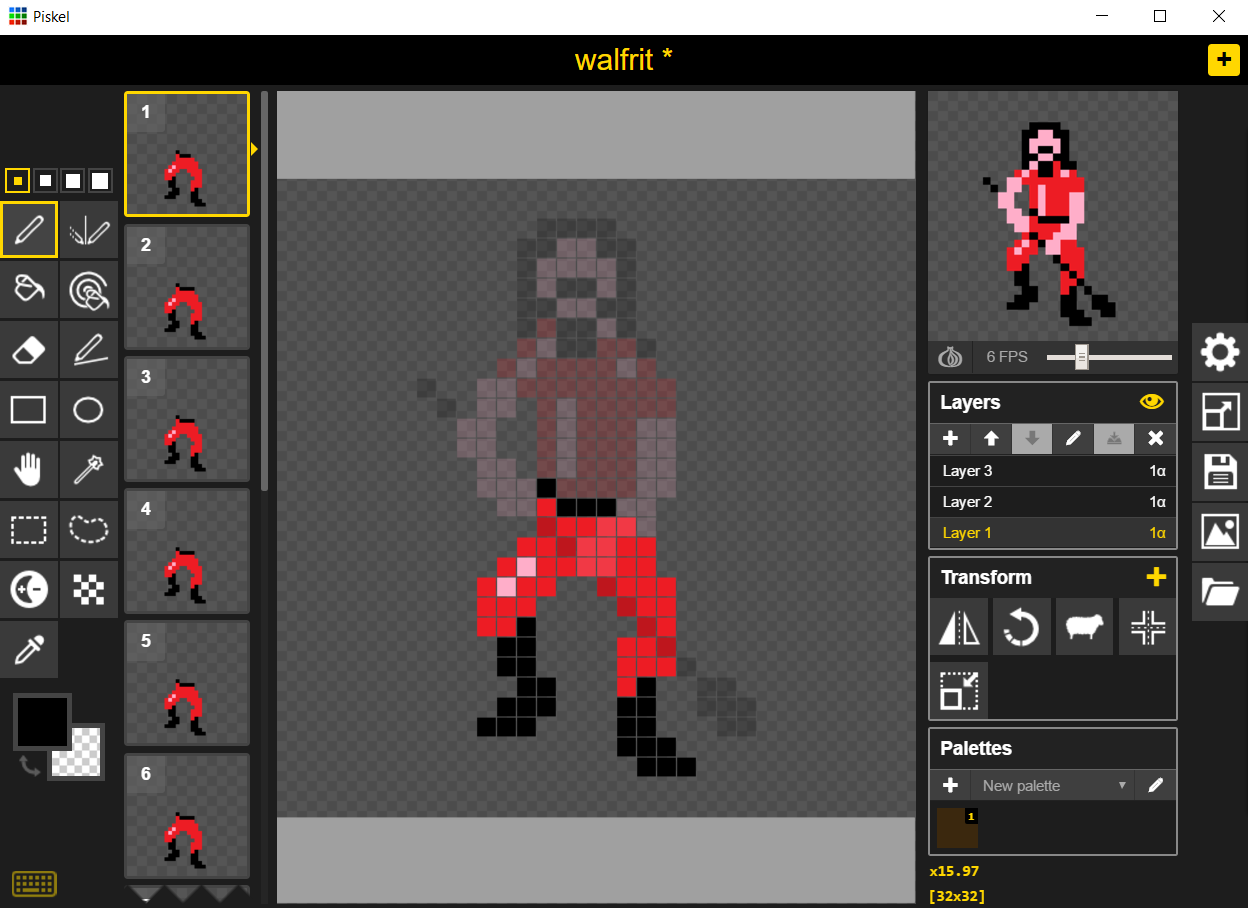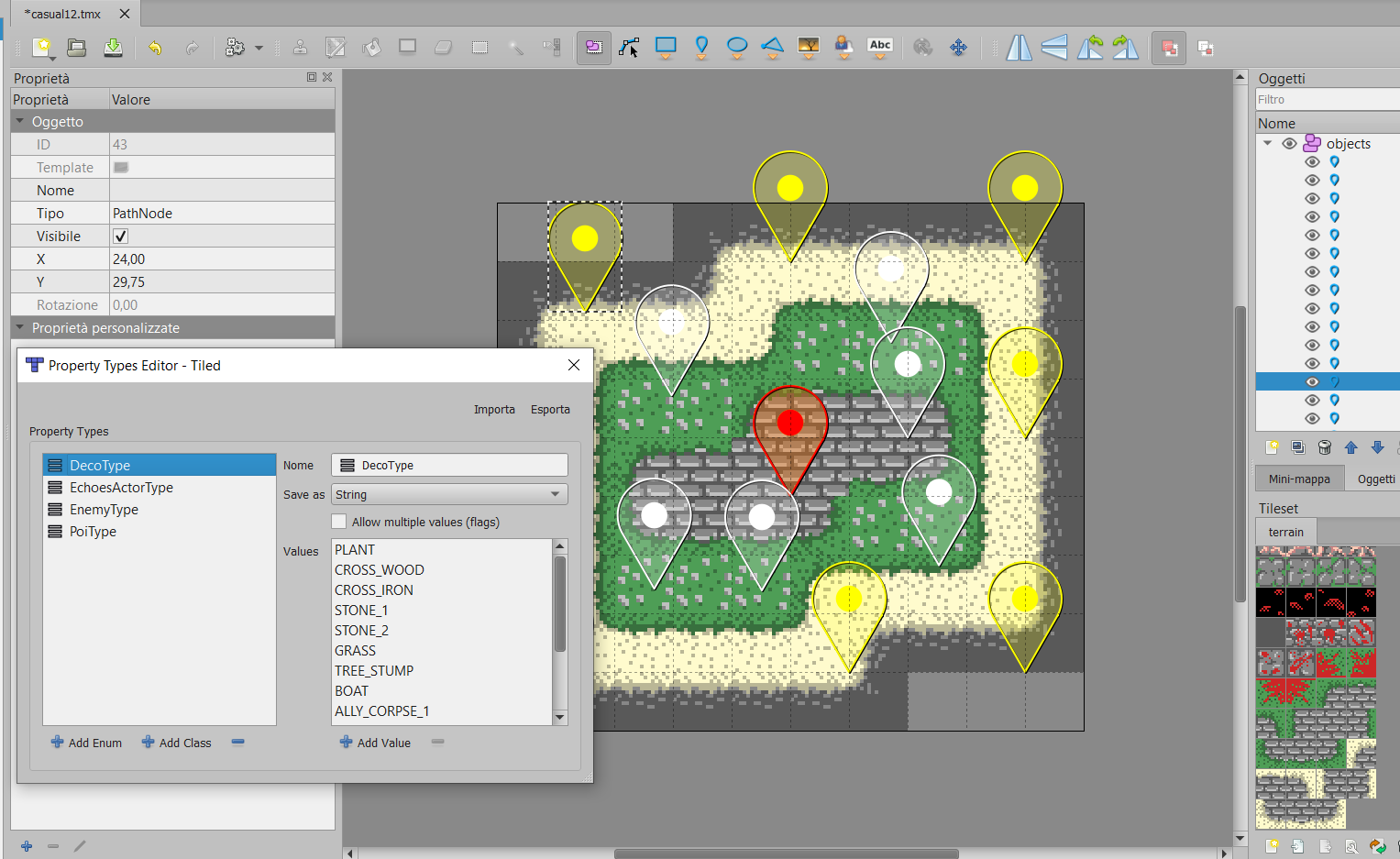Tools of the trade
ENGLISH
In this devlog I would like to talk about the tools I used during Langobardia Horribilis: In Trebia design and development.
libGDX
The game engine (LH-Engine) has been written from scratch in Java, using libGDX 1.10. It features:
- Multiple languages
- gdx-ai implementation for pathfinding
- Entity - Instance framework for separate asset handling and game logic
- Customizable node based world through JSON scripting
- Randomized selection of a room
- Tiled 1.8 (see below) support for level and cutscene editing
- Cutscene system
- Event scripting system in JSON
After game release I am planning to create a standalone version of the engine parts with some CC0 resources on a separate repo and write a documentation just for learning and reuse purpose.
IntelliJ
While I used many IDEs during my software developer career, I worked on LHIT with IntelliJ which I found being perfect for libGDX development.
Piskel and MediBang Paint

All the sprites, the tiles and the animations are done with Piskel. With the collaboration of 2dipixel the tiles and art is also being reviewed and improved using MediBang Paint.
Hiero
The font was converted in a BitmapFont format supported by libgGDX using Hiero.
Tiled 1.8
Tiled has been used for creating all the rooms in the game. LH-Engine uses up to three tile layers (terrain, overlay and echo) and the Custom Property Types feature.

Audacity and Pico8
The little work I did over audio assets was done with Audacity, and it mainly consisted in conversion to OGG format of existing resources.
While I found out late in development about Pico8 and fantasy consoles, I used its sound editing tool for a little experimentation, doing a couple of sound effects.
ITALIANO
In questo devlog vi parlo degli strumenti che ho usato per lo sviluppo e il design di Langobardia Horribilis: In Trebia.
libGDX
L’engine del gioco (LH-Engine) è stata scritta da zero in Java, usando libGDX 1.10. Le sue feature sono:
- Linguizzazione
- Implementazione pathfinding con gdx-ai
- Framework Entity - Instance per separare gestione asset e logica di gioco
- Mondo customizzabile con un sistema di scripting in JSON
- Stanze casuali
- Supporto per Tiled 1.8 (vedi più avanti) per level e cutscene editing
- Sistema cutscene
- Sistema di Event scripting in JSON
Dopo il rilascio del gioco ho in previsione di portare su un nuovo repo l’engine con qualche risorsa cc0 per creare una versione standalone, che avrà anche una propria documentazione.
IntelliJ
Pur avendo usato molti IDE nella mia carriera di sviluppatore, ho lavorato su LHIT usando IntelliJ, che ho trovato perfetto per libGDX.
Piskel and MediBang Paint

Tutti gli sprite, le animazioni e i tile sono stati creati con Piskel. Grazie alla collaborazione di 2dipixel l’arte e in particolar modo i tile sono stati revisionati usando MediBang Paint.
Hiero
I caratteri sono stati convertiti nel formato BitmapFont, supportato da libgGDX, usando Hiero.
Tiled 1.8
Tiled è stato usato per la creazione di tutte le stanze del gioco. LH-Engine usa fino a tre tile layers (terrain, overlay e echo) la nuova feature dei Custom Property Types.

Audacity and Pico8
Per il poco lavoro fatto per gli asset audio è stato usato Audacity, principalmente per convertire in formato .OGG i suoni e le musiche.
Anche se ho scoperto tardi nello sviluppo l’esistenza di Pico8 e delle fantasy console, ho deciso di utilizzarlo per sperimentare con il suo tool di audio editing, creando qualche semplice effetto sonoro.
Get Langobardia Horribilis: in Trebia
Langobardia Horribilis: in Trebia
Horror action adventure game set in post-apocalyptic 750 AD Italy
| Status | In development |
| Author | Jacopo "Faust" Buttiglieri |
| Genre | Adventure |
| Tags | 2D, Action-Adventure, Game Boy, Horror, libGDX |
| Languages | English, Italian |
More posts
- Bugfixes and ImprovementsAug 08, 2024
- LHIT v 2.0Mar 27, 2024
- LHIT v 1.0Sep 19, 2022
- New version sneak peekFeb 04, 2022
Leave a comment
Log in with itch.io to leave a comment.